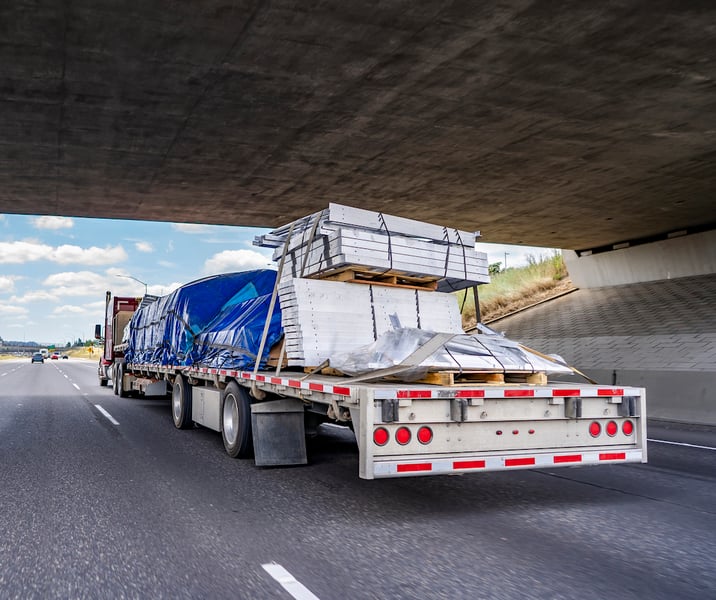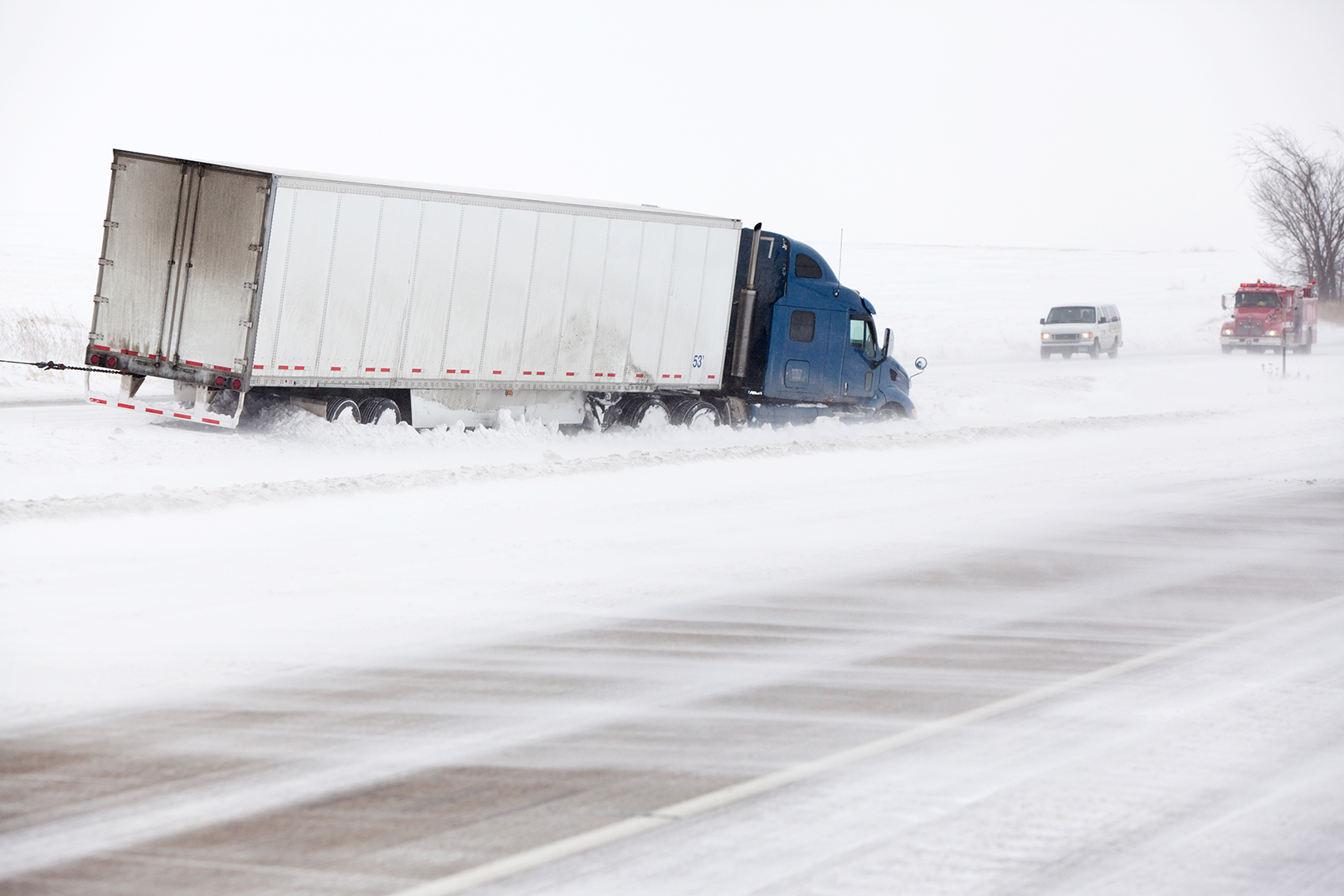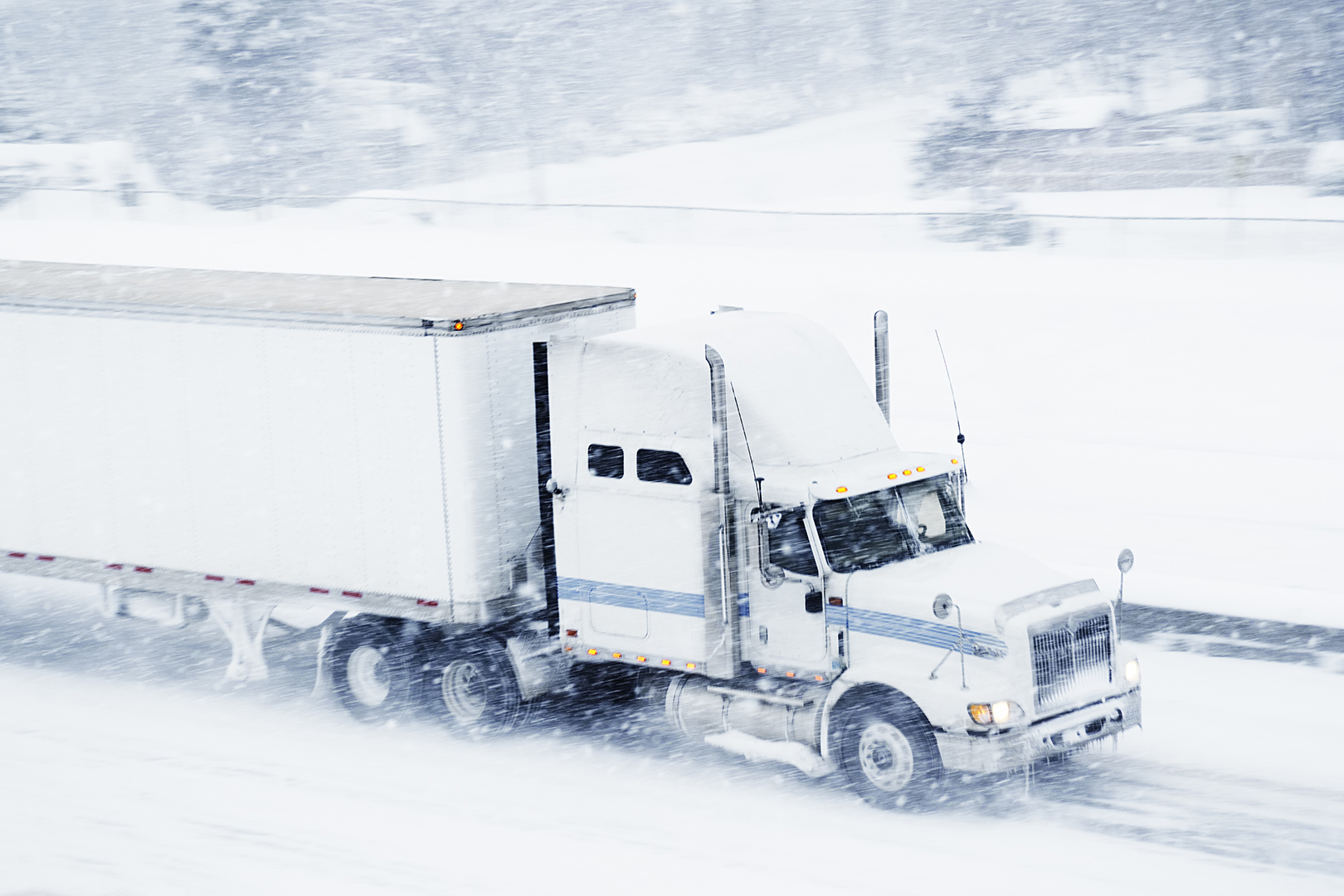Know the Hazards, Safety Precautions of Flatbed Trailer

Flatbed trailers pose a significant number of hazards to drivers, and those hazards can lead to serious injuries and fatalities. Read the information below about flatbed trailer safety and the recommended injury-prevention techniques, and then ask yourself how you can better protect yourself from harm.
RECOGNIZE THE HAZARDS

ENVIRONMENT
The weather can create hazards around the truck. For instance, ice, snow, rain, and mud make surfaces slippery and can cause your feet to lose traction. These conditions can cause a driver to fall off the tractor, trip in a pothole, or slip and fall.

EQUIPMENT
Manually tarping or securing a load using chains and straps exposes a driver to possible back and shoulder injuries as well as hand injuries such as pinches, abrasions, cuts, and bruises. Likewise, improperly securing a load can lead to serious injuries and fatalities to you and others if the cargo shifts or falls off the trailer.
PERSONAL BEHAVIORS
Failing to perform a proper pre-trip inspection and an inspection at each stop can lead to preventable losses. Likewise, not wearing appropriate personal protective equipment (PPE), as well as hurrying and ignoring safety procedures, can contribute to injuries.
KNOW THE DEFENSE

UTILIZE PPE

USE THREE POINTS OF CONTACT
Use three points of contact, meaning both hands and one foot or both feet and one hand are always in contact with the equipment. Always face the equipment when climbing on or off the trailer. Never jump off the trailer.
CONDUCT PROPER VEHICLE INSPECTIONS
Ensure the tractor, trailer, and cargo are inspected thoroughly before leaving. Check the rub rails and headboard for damage. At each stop, re-check that the cargo securement devices are properly in place.
UTILIZE FALL PROTECTION EQUIPMENT
Use fall-protection harnesses or systems, if available, when working from an elevated position. Ensure this equipment is properly inspected and maintained, and you are trained how to use it.
BE ATTENTIVE TO YOUR SURROUNDINGS
Avoid distractions and do not hurry. Watch your step when working on or around the truck. Be attentive to your surroundings and hazards, like ice, snow, and water, that can increase the risk of injury.
The information in this article is provided as a courtesy of Great West Casualty Company and is part of the Value-Driven® Company program. Value-Driven Company was created to help educate and inform insureds so they can make better decisions, build a culture that values safety, and manage risk more effectively. To see what additional resources Great West Casualty Company can provide for its insureds, please contact your safety representative, or click below to find an agent.
© Great West Casualty Company 2023. The material in this publication is the property of Great West Casualty Company unless otherwise noted and may not be reproduced without its written consent by any person other than a current insured of Great West Casualty Company for business purposes. Insured should attribute use as follows: “© Great West Casualty Company 2023. Used with permission by Great West Casualty Company.”
This material is intended to be a broad overview of the subject matter and is provided for informational purposes only. Great West Casualty Company does not provide legal advice to its insureds, nor does it advise insureds on employment-related issues. Therefore, the subject matter is not intended to serve as legal or employment advice for any issue(s) that may arise in the operations of its insureds. Legal advice should always be sought from the insured’s legal counsel. Great West Casualty Company shall have neither liability nor responsibility to any person or entity with respect to any loss, action, or inaction alleged to be caused directly or indirectly as a result of the information contained herein.




